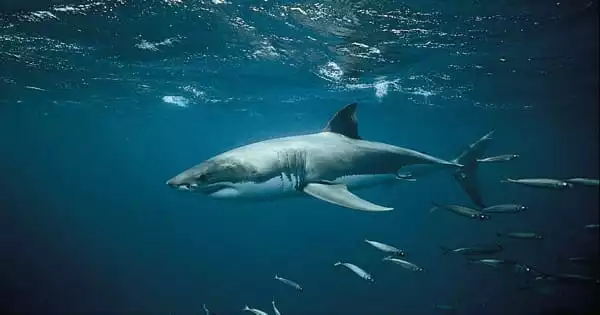The availability of prey and the ability to adapt to changing environments were important factors in shark evolution. A new study that examined over 3,000 shark teeth sheds new light on how modern shark communities came to be. The findings have been published in the journal Current Biology.
The new study looked at the diversity of shark teeth from the end of the Mesozoic (around 80 million years ago) to the present day. It sought to understand why there are only 15 species of mackerel sharks (scientific name: Lamniformes) living today, whereas there are over 290 species of ground sharks (Carcharhiniformes).
“Until now, there has been no deep-time ecological perspective on the modern-day imbalance in diversity between mackerel and ground sharks. Looking back in time, however, we see the opposite pattern: Lamniforms were more diverse than Carcharhiniforms “Dr. Mohamad Bazzi, who previously worked at Uppsala University but is now at the University of Zurich, is the study’s leader.
The availability of prey and the ability to adapt to changing environments were important factors in shark evolution. The study involving the analysis of over 3,000 shark teeth sheds new light on how modern shark communities evolved.
Dr. Mohamad Bazzi
Shark teeth tell the story of shark evolution. This is due to the fact that the majority of what remains for paleontologists to work on are shed teeth. As a result, researchers must seek out novel approaches to help us fill the many gaps in our understanding of their past.
“Tooth morphology is a more direct proxy for shark living habits, and this is the first study to look at how diet influenced lamniform and carcharhiniform sharks over the last 83 million years. We built a foundation for interpreting changes in diet in the fossil record by measuring the association between tooth shapes and diets from living sharks “Dr. Bazzi says
The team compiled a large database of over 3,000 shark teeth and then assessed their shape. The study used geometric morphometrics, a type of mathematical shape analysis, to obtain a measure of shape diversity (or disparity, as it is technically known). To better understand the role of diet in shark diversity, the researchers compiled previously published records of shark diets derived from stomach contents.

Many Cretaceous Lamniformes had specialized diets for eating marine reptiles, and after their extinction at the end of the dinosaur era, these Lamniformes became extinct. Lamniformes with more diverse diets and Carcharhiniformes, on the other hand, survived the extinction event. Carcharhiniformes benefited greatly from the diversification of bony fish that occurred after the extinction event and the spread of coral reefs around 56 million years ago.
The same extinction that wiped out the non-bird dinosaurs may have set the stage for the modern shark community, it turns out. A similar event may have occurred only 5 million years ago to the lamniform megalodon, the largest shark ever to exist (scientific name: Otodus megalodon).
The majority of Megalodon fossils date from the Miocene epoch (which spanned from approximately 23 to 5 million years ago). Lamniform sharks had a record-low tooth disparity during this time period. Because Megalodon most likely specialized in eating large whales at the time, the low disparity suggests that specialized diets among top predatory sharks may put them at risk of extinction.
“Here, we have a good example of the important biological insights offered by studying fossils,” says Dr. Nicolás Campione, co-author, and member of the University of New England’s Palaeoscience Research Centre.
“Our findings show that living Lamniformes are the result of multiple extinction events, possibly caused by a tendency to specialize. Dietary specialization, as well as environmental changes, were most likely major factors in the previously mentioned imbalance between Lamniformes and Carcharhiniformes “Dr. Campione explains.
“We now have evidence that the availability of prey and sharks’ ability to adapt to changing environments played an important role in their past evolution. These factors have contributed to the modern diversity of sharks and, more importantly, will likely determine their survival in the future “Dr. Bazzi says.
















